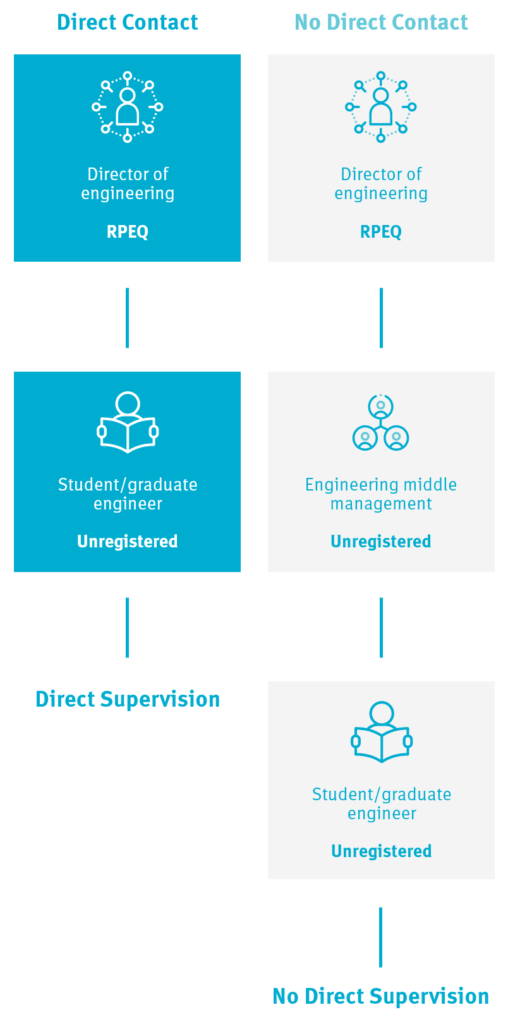Studying and graduating with an engineering degree is the first step toward being recognised as a qualified and competent professional engineer.
Engineers carry out highly complex work, so it is important that only qualified, competent and experienced professionals design, build, maintain and develop the products, infrastructure and services we use every day. It is also important for young engineers to get the right guidance and direction from experienced mentors. The RPEQ system ensures that they do.
To be eligible to become a RPEQ you must first graduate with a four-year degree in engineering from a recognised tertiary institute that meets the standards of the Washington Accord. The Washington Accord is an International Agreement between bodies responsible for accrediting engineering degree programs.
The next step in the RPEQ process is developing competency in engineering – four to five years post-graduation is the requirement.
All students and graduates must work under direct supervision of a RPEQ if carrying out professional engineering services in or for Queensland until they have met the qualification and competency requirements and been assessed. The only other exception is if they are carrying out an engineering service in accordance with a prescriptive standard.

 MY ACCOUNT
MY ACCOUNT












